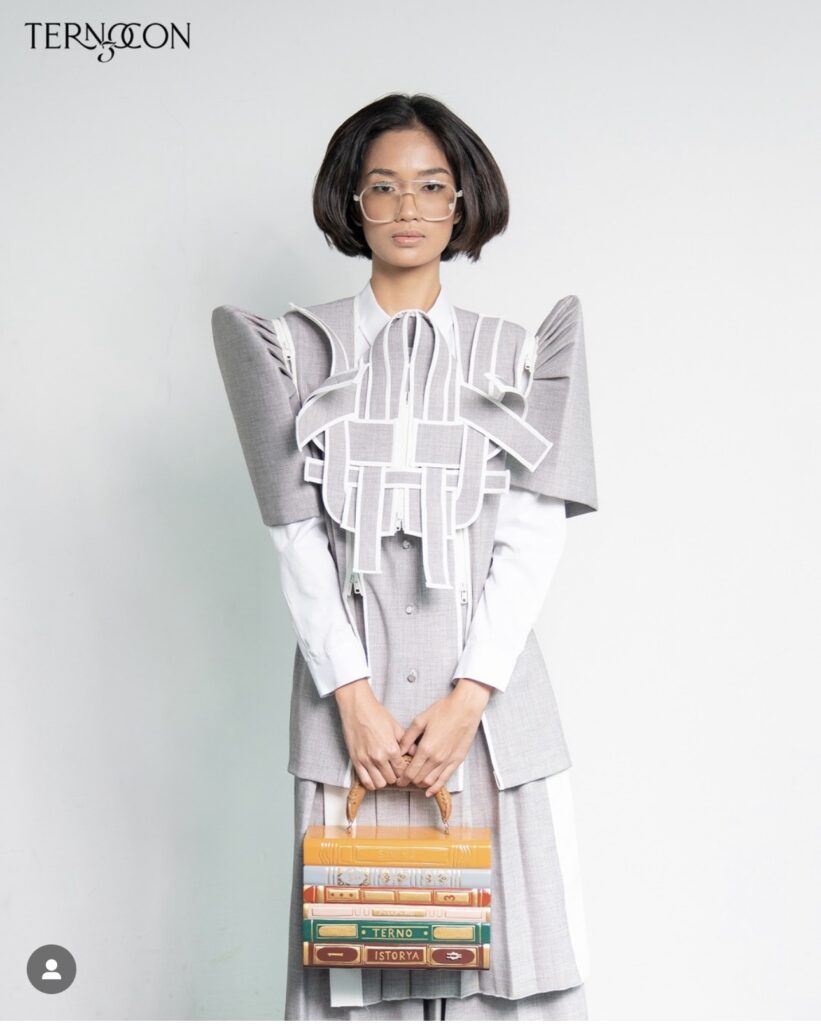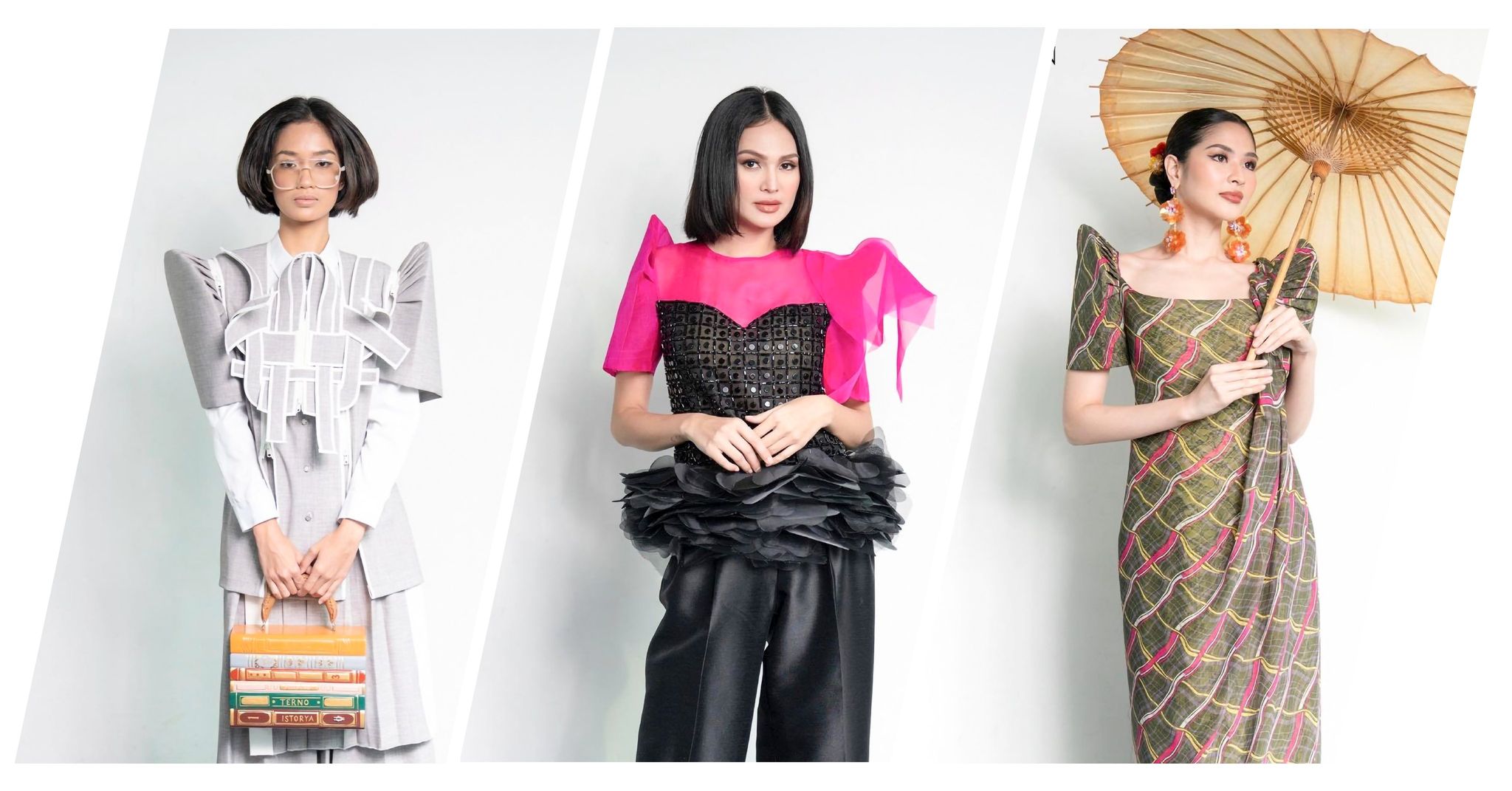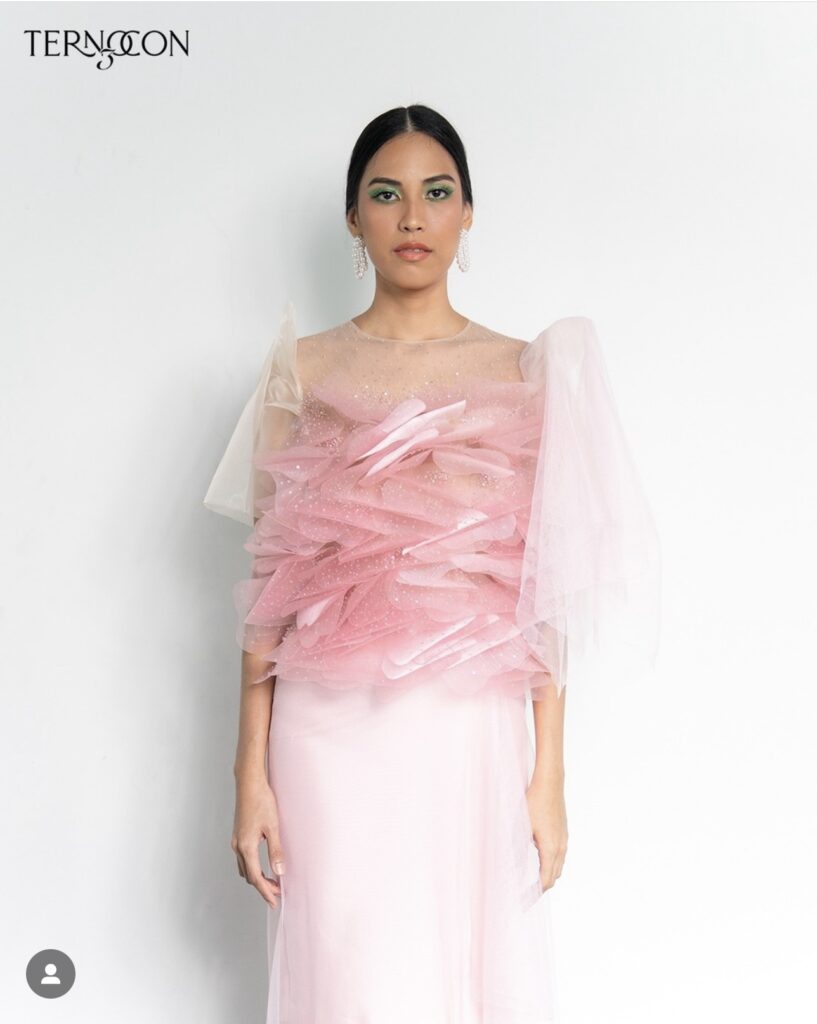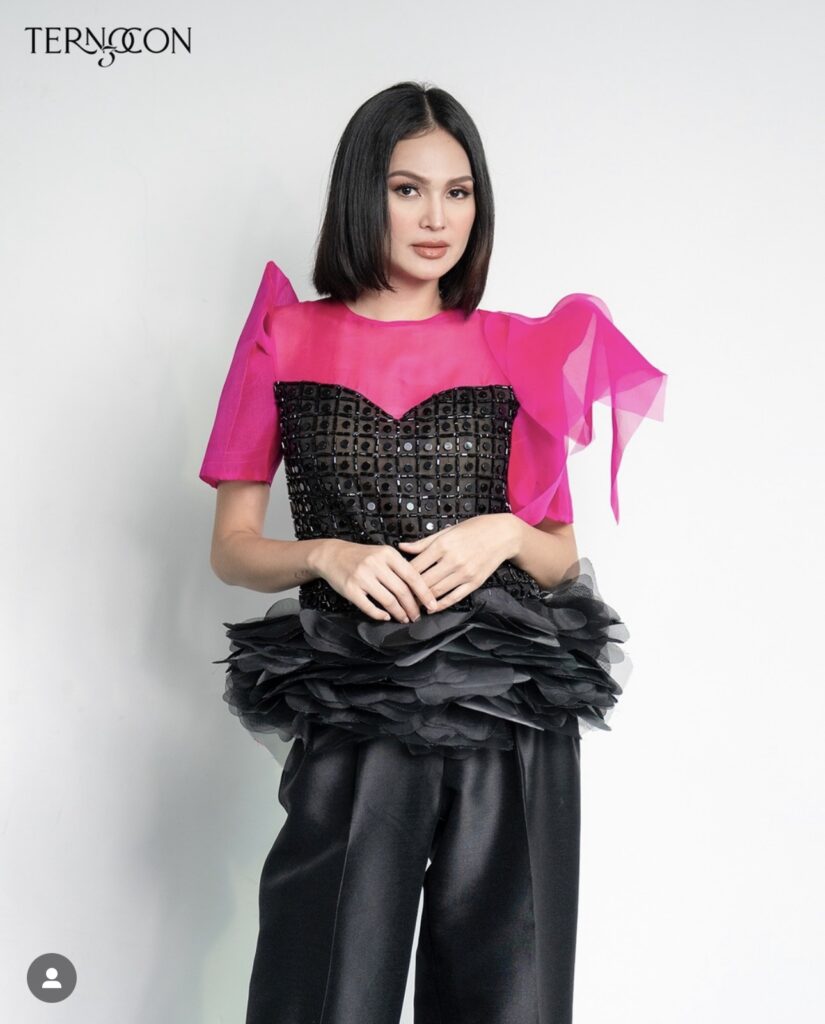Ternocon, a fashion competition originated by Bench’s Suyen Corp., resumes early next year after a two-year disruption because of the pandemic. Twelve finalists, who are being mentored this time by Inno Sotto, Dennis Lustico, Chito Vijandre, Ricky Toledo and Joey Samson, will compete for the top prize with their modern reinterpretation of the colonial-era balintawak, a precursor to the terno.
By Alex Y. Vergara
You can tweak its silhouette and the skirt’s length depending on the dictates of fashion arbiters in Paris. In lieu of silk and the most exquisite imported fabrics for its materials, you can opt for locally made cotton, piña or even abaca that were once woven and dyed by some of the country’s best artisans. You can even choose to embellish its bodice and skirt later with embroidery, wooden beads, feathers, seashells or even tiny trinkets in lieu of Swarovski crystals.
But once you remove those iconic butterfly sleeves, the country’s most famous national dress, which has been a source of immense pride among countless generations of Filipinos, immediately ceases to become a terno.
Dennis Lustico, Joey Samson and Chito Vijandre, together with partner Ricky Toledo, may differ in their approach to doing the terno, but one thing these seasoned Filipino fashion designers agree on is that without those sleeves, one might as well be creating any other dress.

“Those sleeves are the ultimate symbol of a terno,” said Dennis, one of several designers who are mentoring this year’s batch of Ternocon finalists, during a recent press preview organized by Suyen Corp. at The Curve in BGC. “You can play with the silhouette, combination of materials, colors, length of the skirt and even a bit of the proportions, but you can never do away with those sleeves.”
After a two-year hiatus due to the pandemic, the annual Ternocon is back. Spearheaded by Ben Chan, founder and chairman of Suyen Corp., Ternocon is an annual competition that seeks to recognize emerging talents in local fashion design while promoting the terno, including new ways to fashion it based on prevailing aesthetics, sensibilities, techniques and availability of materials.
Coming from various parts of the Philippines, this year’s 12 finalists will be presenting a mini collection of ternos on January 28, 2023 at the Cultural Center of the Philippines’ Black Box Theater. A number of them, together with their mentors, gave members of the media and special guests a preview of what’s to come on finals night by each presenting a terno or two during the exclusive press presentation.
Hannah Adrias, Jaggy Glarino and Dinnes Obusan, winners of Ternocon’s second edition, also added to the special preview’s drama and excitement by presenting their respective terno pieces.
“Mentors will also be presenting a collection of ternos on finals night,” said Dennis. “I will be doing 12 looks. But we won’t be competing against each other. Only our mentees are.”
The difference this year, said leading stylist Noel Manapat, one of Ben’s longtime collaborators, is Ternocon’s focus on the balintawak—a three- to four-piece ensemble worn by Filipino women during the Spanish and early American colonial periods.
The balintawak, with its diaphanous top and butterfly sleeves, was the original inspiration behind the terno, with the likes of the late National Artist for Fashion Ramon Valera, among others, fusing the entire ensemble together like a Western dress and removing such elements as the tapis and panuelo.
“Like the terno, entries will also have those sleeves,” said Noel. “In lieu of the panuelo, finalists can come up with their respective versions of the alampay. The tapis is still there but reinterpreted in various creative and unexpected ways.”
Joey added, pointing to the work of one of his mentees: “If you noticed, the trousers look soft and flimsy, which is like a nod to the lightness of the balintawak. The look is made of wool, but it has a certain lightness to it. And, in lieu of the tapis, it comes with an apron.”
The esteemed Inno Sotto is also one of these year’s mentees, while production and costume designer Gino Gonzales remains part of Ternocon’s creative panel.
The 12 finalists were divided into four, and were assigned to mentors that closely resemble or match their aesthetics. Thus, the so-called maximalist designers, are being mentored by Chito and Ricky. Chito, a former couturier, has no plans of resuming his designing career. But he remains open, he said, to doing special shows and sharing his knowledge with newbies to help advance Philippine fashion.
Finalists with tailored and minimalist aesthetics are being mentored by Joey, while those into classic and feminine looks teeming with Western touches have been divided between Dennis and Inno. But everyone, said Chito, are free to help or give their opinion on a mentee’s work, including those sometimes divisive sleeves.
“As a so-called maximalist, you should still know when to stop,” said Chito. “As mentors we are here to guide them and help them edit their respective pieces.”
In the age of social media and the Internet, the temptation to pile on the inspirations and details on one look is quite huge, especially for newbies out to impress the judges, added Ricky. The mentors are there to redirect, not alter, and sometimes temper their respective visions.
Dennis, who was one of the judges during a previous Ternocon edition, has gone as far as altering the sleeves’ size, making them a tad smaller or bigger, depending on the whims of the wearer. But he can’t imagine himself doing a one-sleeved terno “ever in my career.” In Ricky’s book, playing with proportions as far as those signature sleeves go is perfectly all right, but only up to a point.
“You could probably make it smaller to appeal to a younger wearer, but don’t reduce them to the size of teacup sleeves,” he said. “Because once you tweak the terno, using all sorts of materials, treatments and techniques, those sleeves are the only identifiable elements left in our national costume. Kung ikakahiya mo pa, eh, ’wag na lang. (If you would feel ashamed to show them, then better not do [a terno] at all.)”
For his part, Joey has no problems doing a one-sleeved terno. “To be honest with you, I’ve done it before, but I don’t think I would be doing a one-sleeved terno again. I have to move on and do other things,” Joey, who also originated the wired, barely there skeletal terno sleeves, said.
This year’s 12 Ternocon finalists are: Amor Albano (Ilocos Norte), Glyn Alley Magtibay (Oriental Mindoro), Bon Hansen Reyes (Rizal), and Gabbie Sarenas (Rizal) from Luzon; Bree Esplanada (Cebu), Karl Nadales (Iloilo), Al Rey Rosano (Negros Oriental), and Marc Carcillar (Iloilo) from Visayas; Glady Rose Pantua (Zamboanga) from Mindanao; Yssa Inumerable (Parañaque), Cheetah Rivera (Quezon City), and Dee Javier (Manila) from the National Capital Region (NCR).











